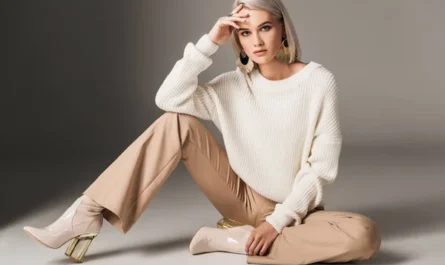The landscape of fashion is undergoing a profound transformation, one that transcends the binary confines of “men’s” and “women’s” clothing. At the heart of this shift lies gender‑neutral fashion, a movement championing inclusivity, self‑expression, and the dismantling of traditional norms. No longer relegated to niche subcultures, gender‑neutral apparel is now at the forefront of design houses, retail strategies, and consumer consciousness worldwide. This article delves into the evolution of gender‑neutral fashion, examines its impact on inclusivity, highlights pioneering brands and designers, and explores future trajectories for this burgeoning trend.
1. Historical Context and Evolution
1.1 Early Roots
While today’s gender‑neutral fashion feels revolutionary, its roots extend back over a century. In the 1920s, icons like Coco Chanel liberated women from restrictive corsets, introducing trousers and tailored suits previously deemed “masculine.”
Later, the 1960s and 1970s witnessed androgynous style pioneers such as David Bowie and Annie Lennox, whose sartorial choices blurred gender lines and inspired a generation to question fashion’s binaries.
1.2 Mainstream Emergence
The term “gender‑neutral” gained traction in the 2010s, propelled by social movements advocating LGBTQ+ rights and non‑binary recognition. Brands like Telfar, Palomo Spain, and Rad Hourani launched collections explicitly marketed as unisex, proving that clothing need not conform to assigned gender categories.
Simultaneously, major retailers such as Zara and H&M began featuring “gender‑free” lines, signaling to the industry that gender neutrality was not a fad but a fundamental shift in consumer demand.
2. Breaking Barriers: Inclusivity and Representation
2.1 Expanding Size and Fit
A critical facet of inclusivity is size diversity. Traditional fashion’s narrow size ranges often exclude plus‑size and mid‑size consumers. While the overall runway representation for these body types remains low—only 0.8% of looks were plus‑size and 4.3% mid‑size in the Spring/Summer 2025 season—some brands and shows have made strides toward broader sizing.
Gender‑neutral lines frequently adopt universal sizing charts and adjustable fits, allowing garments to accommodate a spectrum of body shapes without gendered restrictions.
2.2 Cultural and Racial Inclusivity
Gender neutrality intersects with cultural representation, challenging Eurocentric and cisnormative beauty standards. Designers like Harleen Kaur Chhabra incorporate Sikh heritage into gender‑fluid collections, providing visibility for trans and gender‑expansive individuals of South Asian descent
By featuring models such as Sunny Singh Boparai—a healthcare researcher—on international runways, these designers underscore the importance of intersectional inclusivity in fashion.
2.3 Professional and Social Spaces
Beyond runways and retail, gender‑neutral fashion is reshaping professional dress codes and social norms. A growing body of research highlights how rigid, gendered dress codes in workplaces can marginalize non‑binary and gender‑nonconforming employees, undermining their authenticity and job satisfaction.
Progressive companies are revising policies to allow employees to choose attire aligned with their gender identity, fostering more inclusive and creative work environments.
3. Key Players and Innovative Brands
3.1 High‑Fashion Designers
- Rick Owens: Known for his avant‑garde aesthetic, Owens routinely presents unisex collections featuring oversized silhouettes and neutral palettes that resist gender classification.
- Christian Siriano: Celebrated for size inclusivity and fluid designs, Siriano’s work at New York Bridal Fashion Week introduced non‑binary wedding attire—formal jumpsuits and tailored suits—for all gender presentations.
3.2 Emerging Labels
- Telfar: Founded by Telfar Clemens, this label’s motto “Not for you—for everyone” encapsulates the ethos of accessible, unisex fashion. The signature shopping bag has become a symbol of community and inclusivity.
- Rad Hourani: One of the first designers to launch a completely gender‑neutral line, Hourani’s minimalist collections focus on cut and craftsmanship rather than gendered marketing.
3.3 Retail and Fast Fashion
Mainstream retailers are responding to consumer demand for inclusivity:
- H&M: Their “Gender‑Free Collection” features T‑shirts, hoodies, and trousers designed for all bodies, with marketing that eschews gendered models.
- Zara: Offers a “Ungendered” line that spans blazers, shirts, and knitwear, emphasizing versatility and neutral color palettes.
4. The Role of Sportswear and Activewear
4.1 Revolutionizing Athletic Apparel
Gender‑neutral sportswear addresses both comfort and equality. Traditional athletic wear often enforces gendered fits and styles, alienating non‑binary and gender‑fluid athletes. Brands like TD Sportswear now offer unisex activewear—boxy silhouettes, elastic waistbands, and pastel or neutral color schemes—that prioritize functionality over gender norms.
4.2 Community and Performance
By removing gendered design constraints, gender‑neutral sportswear fosters a sense of community among athletes of all identities. These garments empower individuals to focus on performance rather than conforming to prescribed aesthetics, promoting mental well‑being alongside physical comfort.
5. Societal Impact and Consumer Reception
5.1 Shifting Consumer Mindsets
Surveys indicate that a significant portion of younger consumers—particularly Gen Z—prioritize brands that demonstrate social responsibility and inclusivity. Gender‑neutral lines resonate with these demographics, as they align with broader values of diversity and self‑expression
5.2 Media and Influencer Advocacy
Social media platforms amplify the reach of gender‑neutral fashion. Influencers and activists showcase unisex outfits, providing styling inspiration and challenging followers to rethink gendered wardrobe choices. Hashtags like #GenderNeutralFashion and #UnisexStyle have garnered millions of engagements, reflecting a growing cultural conversation.
6. Challenges and Criticisms
6.1 Commercialization vs. Authenticity
Critics argue that some brands engage in “performative inclusivity,” launching token gender‑neutral items without substantive commitment to diversity in leadership, production, or marketing. True inclusivity requires holistic changes across brand operations, from design teams to supply chains.
6.2 Pricing and Accessibility
High‑fashion gender‑neutral pieces often come with premium price tags, limiting accessibility. To avoid elitism, brands must balance innovative design with affordability, ensuring that gender‑neutral fashion is truly “for everyone.”
7. The Future of Gender‑Neutral Fashion
7.1 Technological Innovations
Advancements in digital tailoring and 3D body scanning promise to enhance fit customization, enabling garments that adapt seamlessly to individual bodies regardless of gender
Such technologies could democratize fashion, offering bespoke experiences at scale.
7.2 Educational and Policy Initiatives
Fashion institutions and industry bodies are beginning to incorporate gender inclusivity into curricula and guidelines. By educating future designers on non‑binary perspectives and inclusive practices, the industry can sustain its progress toward a more equitable future.
7.3 Global Perspectives
While Western markets have led the gender‑neutral movement, designers worldwide—from Seoul to Lagos—are infusing local cultural narratives into unisex designs. This global exchange enriches the movement, ensuring it reflects diverse experiences and aesthetics.
Conclusion
Gender‑neutral fashion represents more than a trend—it embodies a paradigm shift toward inclusivity, self‑determination, and the celebration of diversity. By breaking down the barriers of binary dressing, the industry is not only redefining style but also affirming the identities of countless individuals. From high‑fashion runways to everyday activewear, gender‑neutral apparel is forging a more inclusive, creative, and equitable future for fashion. As designers, brands, and consumers continue to embrace this movement, the promise of a world where clothing is liberated from gender constraints moves ever closer to reality



